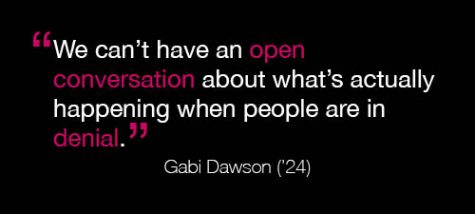Toxic masculinity at ASL
February 28, 2021
Jaworski said although ASL is not exempt from toxic masculinity, it fares far better than her previous school in Minneapolis, Minnesota, because students at ASL have more open minds. At this school, she said, students can be on the basketball team and in the musical.
“A lot of students really understand how lucky they are to have the education they have in ASL,” she said. “They want to take advantage of it. It’s not just about coming here to play sports. You have some people who kind of cross those more than other schools.”
Dawson said conversations about how toxic masculinity manifests at ASL are difficult to engage in because many people have trouble confronting the problem.
“We can’t have an open conversation about what’s actually happening when people are in denial,” she said.
Furthermore, Yardley said this difficulty is exacerbated by the school culture’s inclination to hyper-focus on different worries, such as future academic plans, rather than those related to gender.
[Click here to listen] “ASL is always like, ‘Ooh college, what do you want to study?’” he said. “How the f*** am I supposed to know? I don’t even know if people think I’m a boy.”
Jaworski said another challenge from an administrative point of view is how hard it is for members of the community to tell the administration about incidents that are a product of toxic masculinity. Gladis dubbed these unspoken incidents “blind spots.”
“There can be lots of things happening that I’m not aware of unless someone comes forward, which is a really, really hard thing to do,” Jaworski said.

Difficulty in coming forward is one of the reasons Jaworski said it’s really important students have access to administrators who are different genders.
Yardley said the administration is often less cognizant of problems stemming from toxic masculinity, and thus relies on the student body to shed light on these issues.
“Maybe the ASL administration isn’t always pulling their weight,” he said. “But I do think the student body does a good job of putting pressure on them.”
In response, Jaworski said combating toxic masculinity requires the collaborative efforts of a student-faculty-administration coalition.
Furthermore, Gladis said an increase in this type of collaboration has facilitated more accountability within the community.
“Do I think the administration is taking steps to get better?” he said. “Yes. But we can all do better.”
Jaworski said the end goal is to help men feel as though they can speak up when they observe instances of toxic masculinity.
“How do we bring, you know, boys into a conversation to be able to actually stop this kind of toxic masculinity?” she said. “Because a lot of times the toxic masculinity is happening in spaces where women aren’t.”
Ultimately, Jaworski said if we’re not empowering men to say to their friends, “‘That’s really not okay,’” then women are cutting out “our most important allies and upstanders.”

